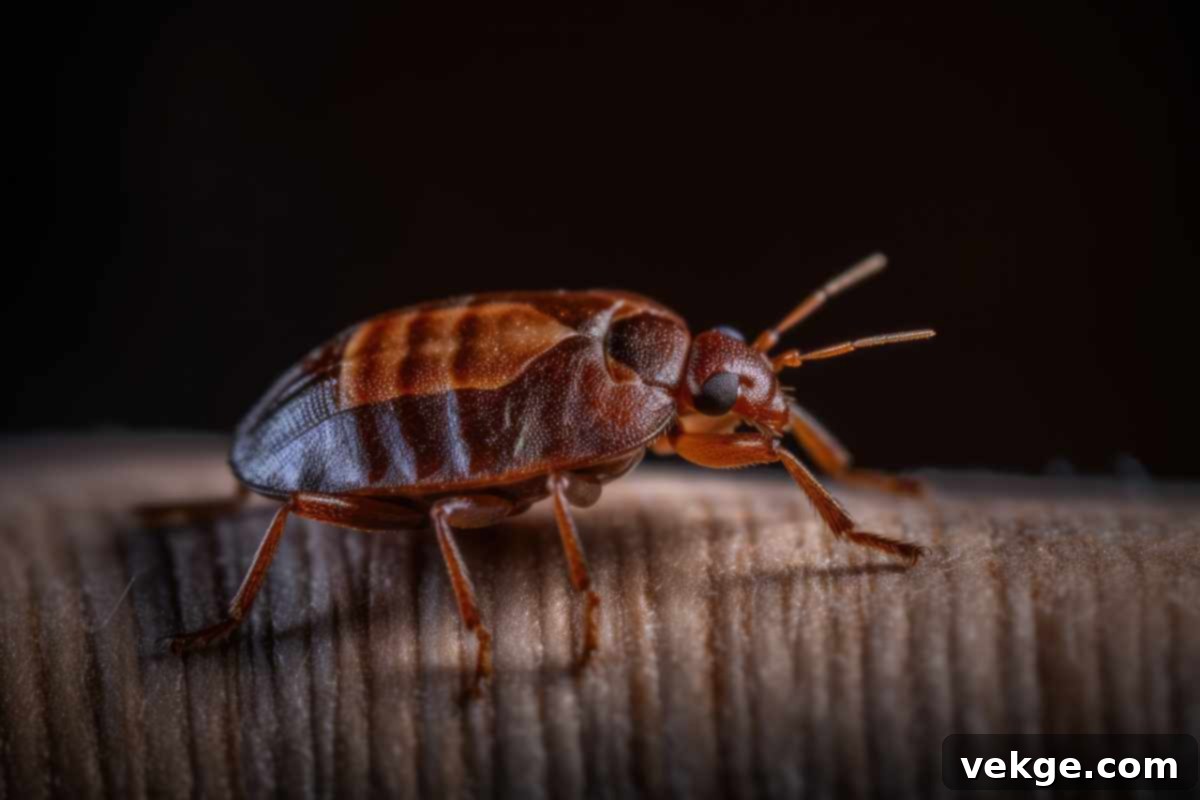Ultimate Guide to Bed Bug Infestation: Detection, Eradication, and Prevention Strategies
Dealing with a bed bug infestation can be a daunting and stressful experience, but swift and informed action is crucial for regaining control of your home. These tiny, elusive pests are masters of concealment, making early detection and effective treatment paramount. This comprehensive guide will equip you with the knowledge to identify an infestation, explore various treatment options, and implement proactive measures to prevent future unwelcome visits from these resilient insects.
Your journey to a bed bug-free home begins with a meticulous inspection. Understanding where these pests hide and what signs they leave behind is the first critical step in assessing the extent of the problem. Once identified, a range of solutions, from heat treatments to chemical applications, can be employed. While some methods offer DIY potential, many significant infestations will benefit greatly from the expertise of professional exterminators, such as those found at www.bedbugspecialist.co.uk, who possess the specialized tools and knowledge to ensure complete eradication.
Beyond treatment, prevention forms the bedrock of long-term control. Simple yet effective habits, like regular vacuuming and diligently sealing potential entry points, are vital in safeguarding your living space from future bed bug invasions. By understanding their behavior and implementing consistent preventive strategies, you can significantly reduce your risk and maintain a peaceful, pest-free environment.
Early Signs of a Bed Bug Infestation: What to Look For
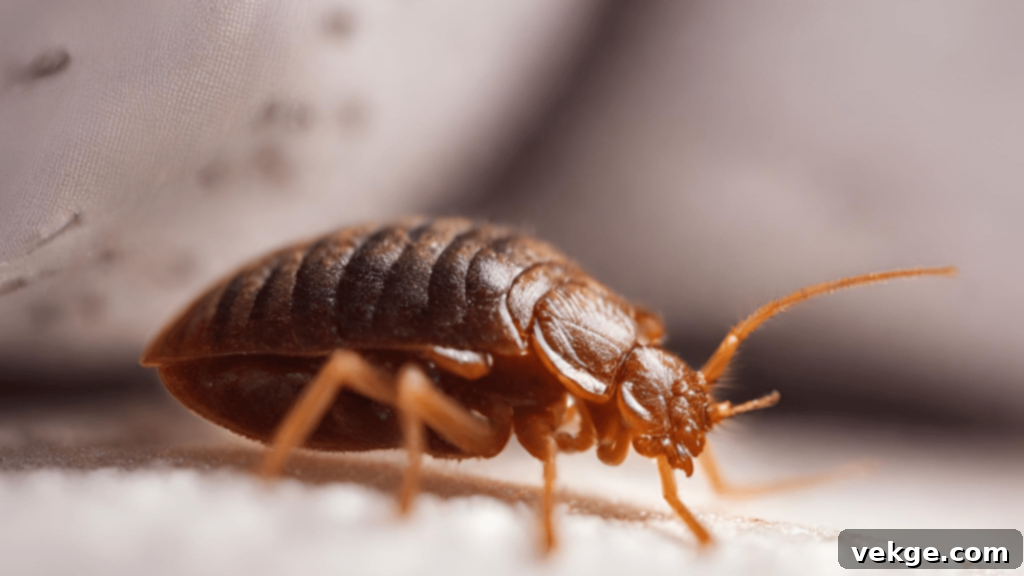
Prompt identification of a bed bug infestation is not just helpful; it’s absolutely paramount. Catching these pests early can dramatically reduce the hassle, stress, and financial burden associated with extensive extermination efforts. Bed bugs reproduce rapidly, and a small problem can quickly escalate into a widespread infestation if left unchecked.
The insidious nature of bed bugs lies in their subtlety. Their early signs are often discreet, making them incredibly easy to overlook or misidentify as something else entirely, like flea bites or other household insects. This is why a keen eye and an understanding of their tell-tale markers are essential for homeowners and travelers alike.
Physical Evidence: Unmasking the Culprits
One of the most reliable ways to confirm the presence of bed bugs is by searching for their undeniable physical evidence. They leave behind several clues that can indicate an active infestation:
- Reddish-Brown Stains on Bedding: Often described as “rusty spots,” these small marks are a common sign. They result from crushed bed bugs or the remnants of blood meals. You’ll typically find them on mattresses, sheets, pillowcases, or even bed frames, appearing as tiny smears or dots.
- Dark Spots or Fecal Stains: These blemishes resemble small, dark ink spots, often no bigger than a marker’s dot. They are dried bed bug excrement, essentially digested blood. Unlike regular dirt, if you moisten these spots, they will smear, a characteristic that helps distinguish them from other marks. Look for them along mattress seams, bed frames, and even nearby walls or furniture.
- Eggs and Eggshells: Bed bug eggs are tiny, pearly-white, and oval-shaped, about 1mm in length – similar to a grain of salt. They are often found in clusters in crevices and protected areas. Empty eggshells are translucent and appear after a nymph hatches. Their presence, along with the even smaller, pale yellow skins shed by developing nymphs (cast skins), are clear indicators of a thriving and reproducing bed bug population.
- Live Bed Bugs: Of course, seeing a live bed bug is the most definitive proof. Adult bed bugs are typically flat, oval-shaped, and reddish-brown, about the size of an apple seed (4-5mm long). After feeding, they become engorged and more reddish in color. Young nymphs are much smaller and translucent, making them harder to spot.
Distinguishing Bed Bug Behavior and Habits
A deeper understanding of bed bugs’ life cycle, feeding patterns, and reproductive habits provides invaluable insight for both early detection and successful treatment. This knowledge also helps in monitoring for any potential future invasions, turning you into a more effective sentinel for your home.
- Feeding Habits: Bed bugs are nocturnal feeders, preferring to emerge from their hiding spots to feed on sleeping hosts during the night. However, a hungry bed bug, especially in a heavy infestation, won’t hesitate to feed during daylight hours if a host is available. Their feeding process requires a blood meal to progress through their six nymphal stages and to allow adult females to lay eggs.
- Reproduction: These pests are prolific breeders. An adult female can lay 200-500 eggs over her lifespan, often depositing several eggs per day. Under optimal conditions, a bed bug can go from egg to adult in about a month, leading to rapid population growth if not addressed promptly.
- Temperature Sensitivity: Temperature plays a significant role in their survival and development. While they can tolerate relatively low temperatures, such as 7°C (46°F), for extended periods, temperatures above 45°C (113°F) are lethal. This vulnerability to heat is a principle utilized in professional heat treatments for eradication. Conversely, very low temperatures (below freezing for several days) can also kill them, though this is harder to achieve uniformly in a home environment.
Nesting Habits and Favored Hideouts
When not actively seeking a blood meal, bed bugs are master hiders, congregating in various secluded areas throughout a household. Their preferred locations are always close to their hosts, ensuring easy access to their next meal:
- Bed Area: They primarily favor the immediate vicinity of their hosts’ bed. This includes mattress seams, piping, tags, box springs, and the intricate cracks and crevices within bed frames (headboards, footboards, side rails).
- Nearby Furniture: As infestations grow, bed bugs expand their domain to nearby furniture. This can include nightstands, dressers (especially within drawer joints and behind them), and upholstered furniture like chairs or sofas.
- Structural Elements: They will also hide in less obvious spots such as behind loose wallpaper, within wall cracks, under peeling paint, inside electrical outlets and light switches, behind picture frames, and even inside electronics or screw heads that protrude slightly from furniture or walls. The more severe the infestation, the further they will spread from the primary resting areas.
Where Bed Bugs Hide: Unconventional Hotspots
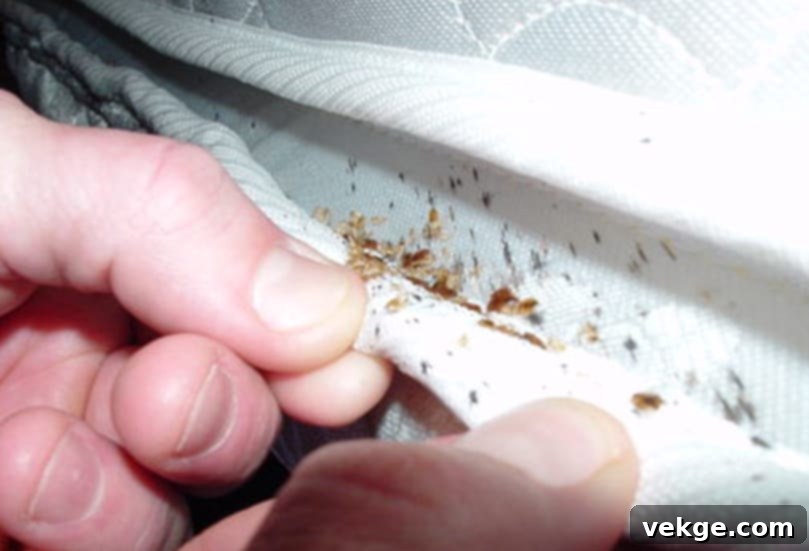
Bed bugs are notoriously adept at finding the most unexpected and often overlooked places to hide, making them a challenge to fully eradicate. Their elusive behavior means that relying solely on inspecting mattresses and bed frames might leave hidden populations intact.
For instance, one surprising hiding spot for bed bugs is within the seams and pockets of purses and handbags. When a purse is placed on public transport, near furniture in a hotel, or even on the ground in a home with an infestation, it creates a perfect opportunity for these tiny pests to sneak in and hitchhike to a new location. Similarly, backpacks and luggage are prime bed bug carriers, especially after travel.
Another unexpected refuge, particularly concerning for families, is the fur of stuffed animals. Considering that children frequently carry these beloved toys from place to place – be it to school, a friend’s house, or on vacation – the risk of spreading infestations rises significantly. These soft, textured surfaces provide ample hiding spots for bed bugs and their eggs, making regular inspection and cleaning of such items crucial.
Interestingly, bed bugs can even find shelter in less organic places, such as inside fluorescent light bulbs or their fixtures. While less common, this highlights their ability to squeeze into almost any tight crevice or void. This particular hiding spot underscores the need for a thorough and cautious inspection of all potential areas, no matter how unusual they seem.
|
Hiding Place |
Risk Level |
Preventive Measure |
|---|---|---|
|
Purses & Backpacks |
High |
Avoid placing on ground or near upholstered furniture, especially in public places or infested areas. |
|
Stuffed Animals |
Moderate to High |
Regular hot cycle washing and high-heat drying, or isolating them in sealed bags. |
|
Fluorescent Light Bulbs/Fixtures |
Low (but possible) |
Careful inspection of light fixtures during a thorough sweep, especially if infestation is severe. |
|
School Buses |
Moderate |
Vacuuming backpacks regularly; washing school clothes on hot cycles immediately upon return home. |
|
Airplanes |
Moderate to High |
Watchfulness during travel (check seat seams); keeping luggage elevated; washing all travel clothes upon return. |
|
Table: Commonly overlooked hiding places for bed bugs. |
||
The reach of bed bugs extends far beyond private homes and personal belongings. Public transport, such as school buses, trains, and even airplanes, are common vectors for these pests due to the continuous flux of people and their belongings. This constant movement offers ample opportunities for bed bugs to hitch a ride, transferring from one passenger or piece of luggage to another. Being vigilant in these shared spaces is crucial for preventing them from entering your personal environment.
How to Check for Bed Bugs: A Detailed Inspection Guide
Bed bugs exhibit a strong preference for spaces where humans sleep or rest, making residential homes, university dorm rooms, hotels, and even public transportation vehicles like buses or trains prime locations for infestations. These remarkably resilient creatures are masters of concealment, adept at hiding in countless places, often remaining unseen until their numbers grow substantially.
During daylight hours, when their hosts are typically active, bed bugs retreat to their chosen hiding spots on or immediately around the bed. The most probable locations include the intricate seams and folds of mattresses, the undersides of box springs, and the various crevices and joints within bed frames, headboards, and footboards.
However, an effective inspection requires looking beyond the obvious. These pests may also lurk in less conspicuous areas, blending seamlessly into their surroundings. Thoroughly examine the joints and undersides of dresser tables, search behind loose wallpaper, within cracks and crevices in walls or flooring, and even behind electrical outlet plates. These often-overlooked spots provide excellent camouflage and shelter for bed bugs, making a comprehensive check essential for successful detection.
- Inspect for Bite Marks: The most common initial indicator of an infestation often manifests through itchy red bite marks that appear on your skin after sleeping. These bites commonly present on exposed areas such as the face, neck, arms, hands, or legs. It’s important to note that bite reactions vary greatly among individuals, and bites may take up to 14 days to fully develop, sometimes appearing in a linear pattern or clustered arrangement.
- Search for Physical Signs: Beyond bites, other definitive indicators to actively seek out include the tiny, transparent exoskeletons shed by bed bugs after molting (cast skins). Use a flashlight and a magnifying glass to scrutinize the folds, seams, and tufts of your mattress and sheets, where bed bugs, their eggs, and nymphs may be nestled.
- Look for Blood and Fecal Spots: Examine your mattress, box spring, bed frame, and nearby furniture for rusty-colored blood spots (from crushed bugs) or small, dark, inky fecal spots. These are digested blood and are often found in concentrated areas where bugs frequently rest.
- Detect a Musty Odor: In cases of heavy infestations, an unusually sweet, musty odor might be noticeable. This scent is produced by the bed bugs’ scent glands and can be a strong indicator of a significant pest problem.
- Check Beyond the Bed: Remember that despite their ability to travel over 100 feet in a single night, bed bugs typically prefer to reside within an 8-foot radius of their host’s primary sleeping area. This means you should also inspect areas like curtains, baseboards, electrical outlets, and any upholstered furniture near the bed.
Remember that early detection is the single most crucial factor in effectively dealing with a bed bug infestation. By being vigilant, proactive, and thorough in your inspections, you can ensure your comfort, well-being, and prevent a minor issue from becoming a major headache. If you find any of these signs, it’s time to consider your next steps.
Getting Rid of Bed Bugs: Effective Methods and Key Considerations
Bed bugs have earned their notorious reputation for being incredibly elusive pests. Their ability to tuck away into the tiniest, hardest-to-reach spots makes them exceptionally challenging to spot and even more difficult to eliminate completely. Addressing an infestation requires persistence, knowledge, and often, professional intervention.
Are Bed Bugs Good at Traveling?
Indeed, bed bugs are exceptional hitchhikers, a trait that significantly contributes to their global spread. Their small, flat bodies allow them to easily conceal themselves within luggage, clothing, furniture, and even electronics, moving from one location to another often unnoticed by unsuspecting travelers. This is why vigilance during and after travel is a critical part of prevention.
How Does Panic Impact Managing a Bed Bug Infestation?
Discovering a bed bug infestation can naturally trigger feelings of panic, distress, and anxiety. However, succumbing to panic can hinder effective management. It’s crucial to remember that despite their persistence and the psychological toll they can take, bed bugs can be eliminated effectively with the right approach and proper measures. A calm, methodical strategy is far more beneficial than impulsive, unguided actions.
Is It Possible to Eliminate Bed Bugs on My Own?
While minor infestations or isolated bugs might sometimes be managed with diligent DIY methods (like vacuuming, steaming, and extensive laundry), bed bug elimination, especially for established infestations, can be incredibly challenging without professional help. Over-the-counter pesticides often lack the efficacy of professional-grade products, and DIY efforts can sometimes scatter the bugs, making the problem worse. For comprehensive and guaranteed eradication, seeking assistance from a reputable pest control service is highly recommended.
How Do We Identify a Bed Bug Bite?
Identifying a bed bug bite solely based on skin lesions is notoriously difficult and unreliable. Bite reactions can vary significantly from person to person – some individuals experience no reaction at all, while others develop severe, itchy welts, often resembling mosquito or flea bites. They commonly appear in lines or clusters on exposed skin. However, suspecting bed bugs from skin lesions alone is not advisable for definitive confirmation; the only sure way to confirm an infestation is by physically finding the pests themselves or their definitive signs (fecal spots, shed skins, eggs).
Are Bed Bugs Harmful to Humans in Any Other Way Besides Bites?
Although bed bugs feed on human blood, causing itchy bites and potential sleep disruption, they are not known to transmit diseases to humans. This is a significant distinction from other blood-feeding pests like mosquitoes or ticks. However, their bites can lead to secondary skin infections if scratched excessively, and a prolonged infestation can cause significant psychological distress, anxiety, and sleep deprivation. You can learn more about these pests and their impact from this authoritative source.
Where Are We Most Likely to Find Bed Bugs?
Bed bugs are opportunistic and can be found in a wide variety of places where people congregate or rest. You might come across these parasites not only in homes, apartments, and dorm rooms but also in schools, offices, hotels, hospitals, movie theaters, and even public areas like libraries, retail facilities, and laundromats. Essentially, any place with soft furnishings and human hosts is a potential hotspot.
Why Is There an Increase in Bed Bug Infestations Lately?
The global surge in bed bug infestations over the past few decades is attributed to several interconnected factors. Increased international travel allows these hitchhikers to easily spread across continents. Furthermore, the development of insecticide resistance in bed bug populations, coupled with changes in pest control practices (moving away from broad-spectrum residual sprays), has made them more resilient. A general lack of public awareness and vigilance also contributes to infestations going undetected until they are well-established.
Preventing a Future Bed Bug Infestation: Proactive Strategies
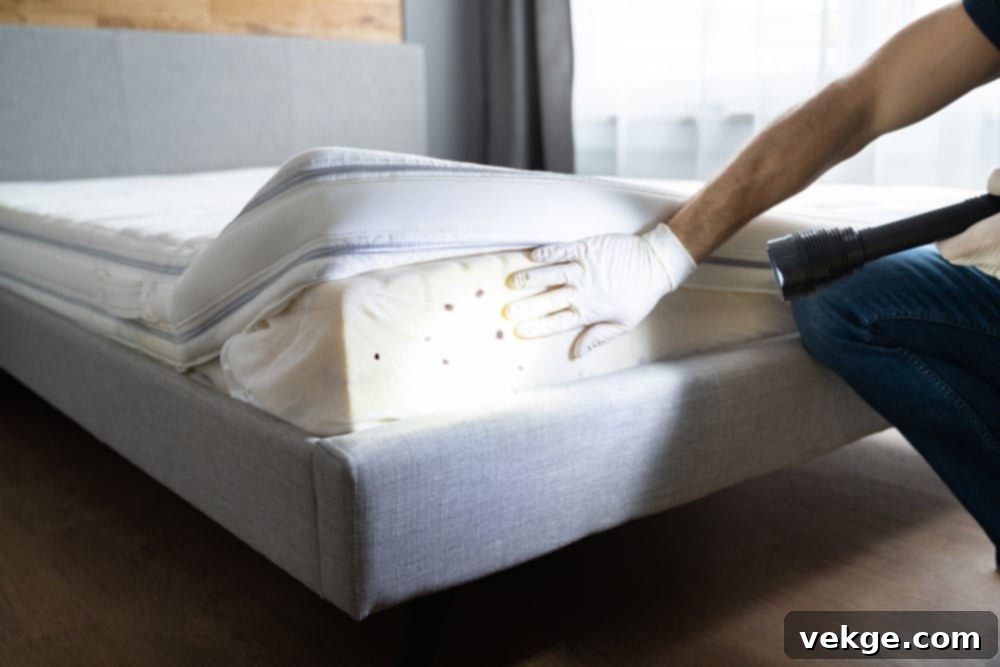
Bed bugs are highly opportunistic insects, masters of clandestine travel. They readily latch onto clothing, furniture, luggage, and personal items to journey from one destination to another. Consequently, maintaining a high level of vigilance and implementing proactive prevention strategies are absolutely instrumental in safeguarding your home from future infestations.
Smart Habits for Travelers:
- Hotel Vigilance: When staying in hotels, motels, or even apartments/dorm rooms (especially those with a history of bed bug issues), make it a habit to inspect your room thoroughly upon arrival. Pull back sheets and check mattress seams, headboards, and bedside furniture for any signs of bed bugs (spots, skins, live bugs).
- Luggage Management: Avoid placing your luggage directly on the floor or on upholstered furniture in hotel rooms. Instead, elevate it on metal luggage racks, tables, or dressers, away from walls. Consider keeping your suitcase zipped closed when not in use.
- “The propensity of bed bugs to move across different locations underscores the importance of regular inspection and preventive measures.”
- Post-Travel Routines: Upon returning home, unpack your luggage outdoors or in a garage if possible. Immediately wash all travel clothing (even unworn items) in hot water and dry them on the highest heat setting to kill any potential hitchhikers. Inspect your luggage carefully before storing it.
Protecting Your Home:
- Secondhand Items: Be extremely cautious with secondhand items such as mattresses, bedding, upholstered furniture, and even electronics. These can be hidden hotspots for bed bugs. Conduct thorough, meticulous inspections of such items before bringing them into your living space. If possible, consider having them professionally treated or, if unsure, avoid them entirely.
- Mattress Encasements: Encase your mattresses and box springs in high-quality, zippered, bed bug-proof covers. These encasements trap any existing bugs inside (eventually killing them) and prevent new ones from colonizing your bedding.
- Regular Cleaning: Routinely vacuum your home, paying special attention to carpets, rugs, baseboards, and around your bed. Dispose of the vacuum bag immediately in a sealed outdoor trash can after use. Regularly wash and hot-dry all bed linens, curtains, and other washable fabrics.
- Seal Entry Points: Seal cracks and crevices in walls, plaster, and around baseboards. Repair loose wallpaper. These measures eliminate potential hiding spots for bed bugs, making your home less hospitable.
- Declutter: Reduce clutter, especially around your bed and in bedrooms. Less clutter means fewer places for bed bugs to hide and makes inspections more effective.
The risk of encountering bed bugs increases manifold in areas with high people flux, such as cruise ships, trains, buses, movie theaters, or even refugee camps. Therefore, maintaining a heightened sense of caution and implementing these preventive steps are crucial when traveling or living in shared spaces.
For further in-depth reading on this subject matter, you may want to visit Mayo Clinic’s informative section on bed bugs, which provides valuable medical and practical advice.
When to Contact a Pest Control Professional for Bed Bugs
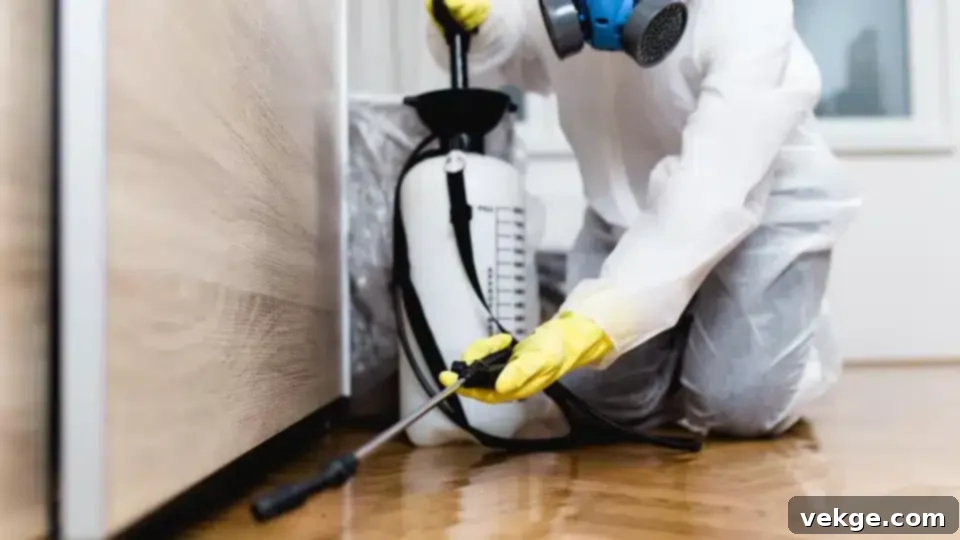
If you suspect a bed bug infestation in your home, the decision of whether to tackle it yourself or call in the experts can be critical. For most established infestations, professional pest control is often the most effective and efficient solution. Exterminators possess specialized tools, training, and expertise that far outmatch typical DIY methods, leading to more thorough and lasting results.
Professional pest control services utilize proven strategies that often involve a combination of comprehensive cleaning, targeted chemical applications, heat treatments, and strategic rearrangement of spaces to lower infestation chances. Their superior equipment, such as industrial-strength steamers or heat treatment systems, ensures quickness and effectiveness in dealing with these resilient pests, reaching areas that DIY solutions simply cannot.
Despite the array of home remedies and over-the-counter products available, bed bugs are notoriously adept at hiding in challenging, inaccessible spots. This inherent difficulty in reaching every last bug is precisely why professional intervention becomes not just an option, but often a necessity, for complete eradication.
- Pricing Considerations: The cost of professional bed bug treatment typically ranges from $500 to $1500 or more, with prices escalating for severe, widespread infestations or properties requiring multiple treatments. It’s advisable to check with your landlord or property management if you reside in a rental property, as they may bear some or all of the cost responsibility.
- Treatment and Monitoring: Professional treatment often involves multiple phases. Post-extermination, a two-week monitoring period (or sometimes longer) is essential to confirm the complete elimination of bed bugs. If any signs of activity are spotted during this period, additional treatments or follow-up visits might be necessary to break the bed bug life cycle entirely.
- Hard-to-Handle Cases: Large, well-established infestations almost always demand professional involvement. This is especially true when the infestation has spread beyond a single room, when residents have mobility-restricting conditions that prevent thorough DIY efforts, or when individuals experience severe allergic reactions to bed bug bites.
- Sensitive Conditions: Certain demographics, such as the elderly, pregnant women, or individuals with compromised immune systems, should strongly consider seeking professional help immediately. The health concerns potentially exacerbated by bed bug bites (e.g., secondary infections, severe allergic reactions, psychological stress) warrant the safest and most effective eradication methods available.
The Environmental Protection Agency (EPA) strongly suggests working with companies that adhere to Integrated Pest Management (IPM) principles. IPM professionals combine various strategies, including inspection, monitoring, cultural practices (like sanitation and decluttering), physical controls (like vacuuming and heat), and judicious use of pesticides. These professionals are not only equipped to eradicate existing infestations but can also be instrumental in educating you on identifying signs of recurring infestations and implementing long-term preventive measures.
If battling bed bugs proves consistently unsuccessful via DIY methods, or if the proper and safe usage of pesticides seems daunting or risky, remember that professionals are specifically equipped and trained to handle larger outbreaks with effective and safe protocols. They provide peace of mind and often guarantee their work, a benefit rarely found with self-treatment.
The need for a pest control professional is ultimately determined by the extent of the infestation, the specific challenges of your living environment, and your personal capacity to handle it effectively. Being proactive, thoroughly aware of the signs, and understanding the limitations of DIY approaches can greatly assist in making this critical decision.
Disposing of Bed Bug Infested Furniture: Responsible Practices

Properly disposing of bed bug infested furniture is a critical step in preventing the further spread of these resilient pests. Simply placing a contaminated item on the curb can inadvertently contribute to new infestations in your neighborhood. Responsible disposal requires careful planning and execution to ensure the bugs remain contained and do not hitchhike to new homes.
The first and most crucial step is to encase your infested furniture entirely in heavy-duty plastic wrap or large plastic bags. This is not just a suggestion; it’s a non-negotiable measure to keep the bugs contained within the item during transport and until it is picked up for disposal. Ensure the plastic is sealed tightly with strong tape, leaving no gaps for bugs to escape.
Equally important is to add a clear and unambiguous sign warning others about the infestation. Phrases such as “Bed Bug Infested – Do Not Take” or “Caution: Bed Bugs” written in bold, legible letters are essential. This step is crucial to deter well-meaning individuals from unintentionally acquiring your infested items and inadvertently spreading bed bugs to their own homes or communities.
The method and timing of disposal are just as significant as containment and labeling. It is advisable to promptly discard the furniture, coordinating with your local waste management services for a secure and timely pickup. Allowing infested items to sit on the curb for extended periods increases the risk of bugs escaping or being picked up by unsuspecting individuals.
- Sealing the Infestation: Before moving any infested furniture, carefully wrap and seal it completely in heavy-duty plastic sheeting or bags. Ensure every surface is covered and sealed with strong tape.
- Evident Marking: Clearly and visibly label all infested items with a warning such as “Bed Bug Infested” or “Do Not Take” to prevent others from salvaging or touching them.
- Timely Disposal: Coordinate with your waste collection service for immediate and secure disposal. Avoid leaving items on the curb for extended periods, especially overnight.
- Protect Yourself: When handling infested items for disposal, always wear protective clothing (long sleeves, gloves) to minimize direct contact with bugs. Use safe handling tools like furniture dollies to avoid personal contact with the item and to prevent bugs from falling off onto your clothing or body.
It’s vital to understand that simply replacing old furniture will not necessarily eradicate an existing bed bug problem if the bugs have spread to other areas of your home (e.g., walls, baseboards, other furniture). Therefore, comprehensive preventive measures for new furniture and ongoing treatment of your home are also needed.
Ensure thorough cleaning and consider encasement for new mattresses and box springs. Regular washing and hot drying of all bed linens are also critical. Most importantly, carefully examine any new or used furniture before introducing it into your home. This multi-faceted approach helps to keep your space safe from potential new bed bug threats and prevents a cycle of re-infestation.
If the task of safely disposing of bugs-ridden items seems overwhelming or too demanding, seeking assistance from professional pest control services is a wise decision. They have the necessary expertise, specialized equipment, and knowledge of local disposal regulations for safe and efficient removal, minimizing any further spread of bed bugs. Many pest control companies offer specific services for handling and disposing of infested items.
Always be responsible and considerate while disposing of infested goods. This means limiting their presence on the curb or in public areas before trash pickup, and ensuring they are visibly and clearly marked as “Bed Bug Infested.” Your responsible disposal practices can significantly contribute to keeping your home and the wider community safe from the insidious spread of these pests. Remember, proper precautions are not just for your benefit, but for the well-being of others when handling bed bug infested furniture.
Conquer the Critters: Reclaiming Your Sanctuary
In the arduous battle against a bed bug infestation, hope is always at hand. By diligently adopting the effective solutions and proactive strategies outlined in this guide, you can successfully protect your home and reclaim the peaceful, undisturbed sleep you deserve. The journey to a bed bug-free environment may demand patience and persistence, but it is entirely achievable.
Remember, your most potent weapons in this fight are consistent cleanliness, vigilant inspections, and, when necessary, professional treatments. With these tools firmly in your arsenal, you have the power to systematically eradicate those pesky invaders and restore your home to its rightful status as a comfortable, safe sanctuary.
Never underestimate the resilience and cunning of bed bugs. Make it a routine to regularly check your living spaces, especially areas prone to infestations. At the first sign of trouble, take immediate, decisive action. It’s your home, your peace of mind, and your health – don’t let these tiny creatures take over.
